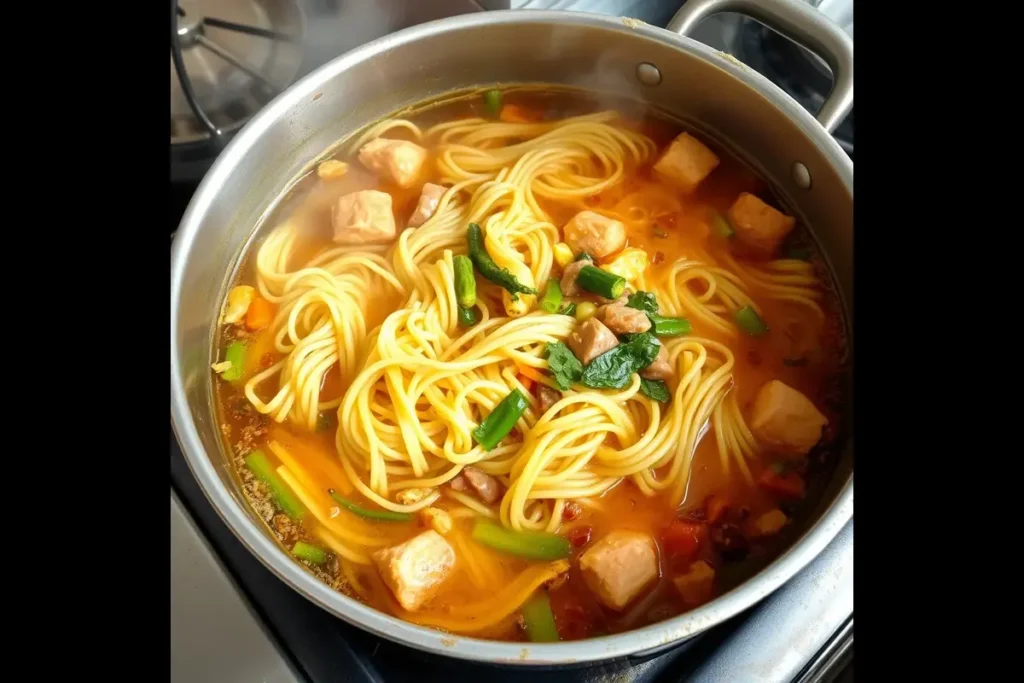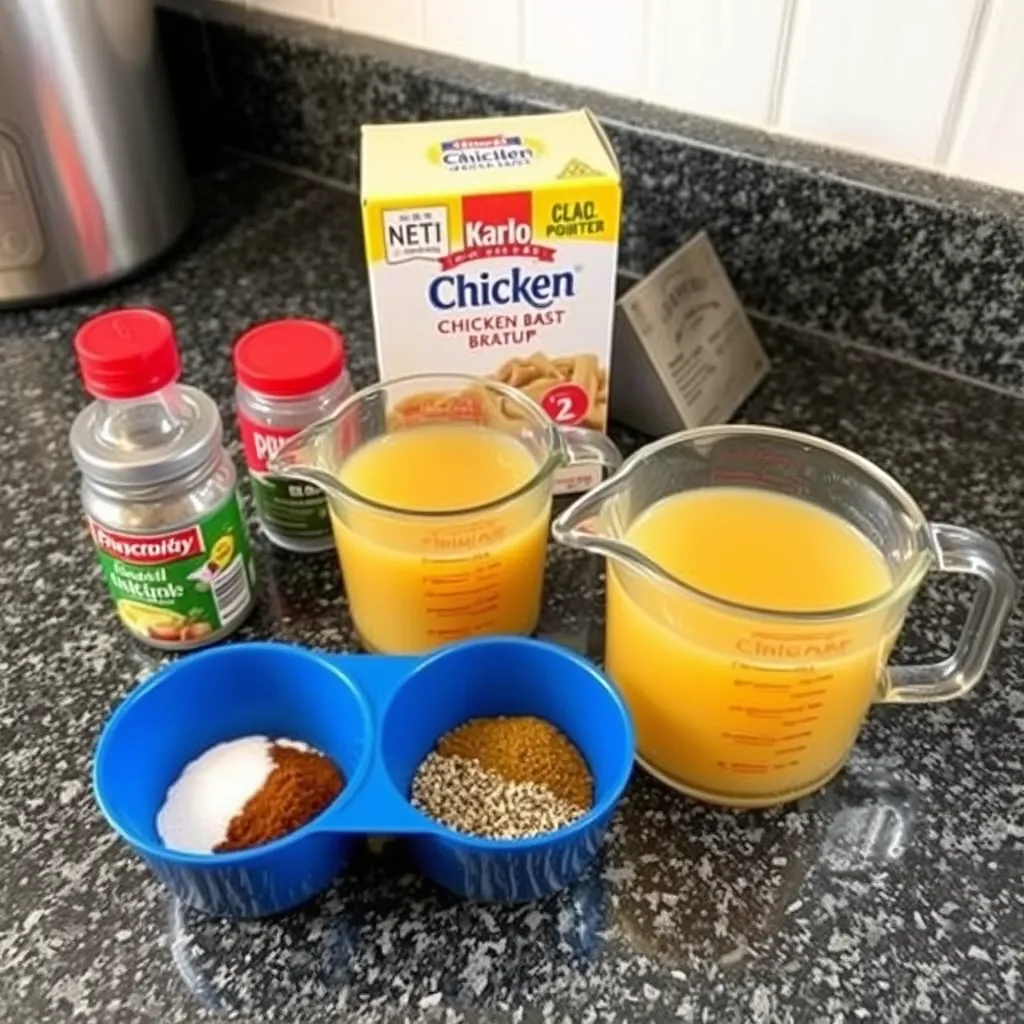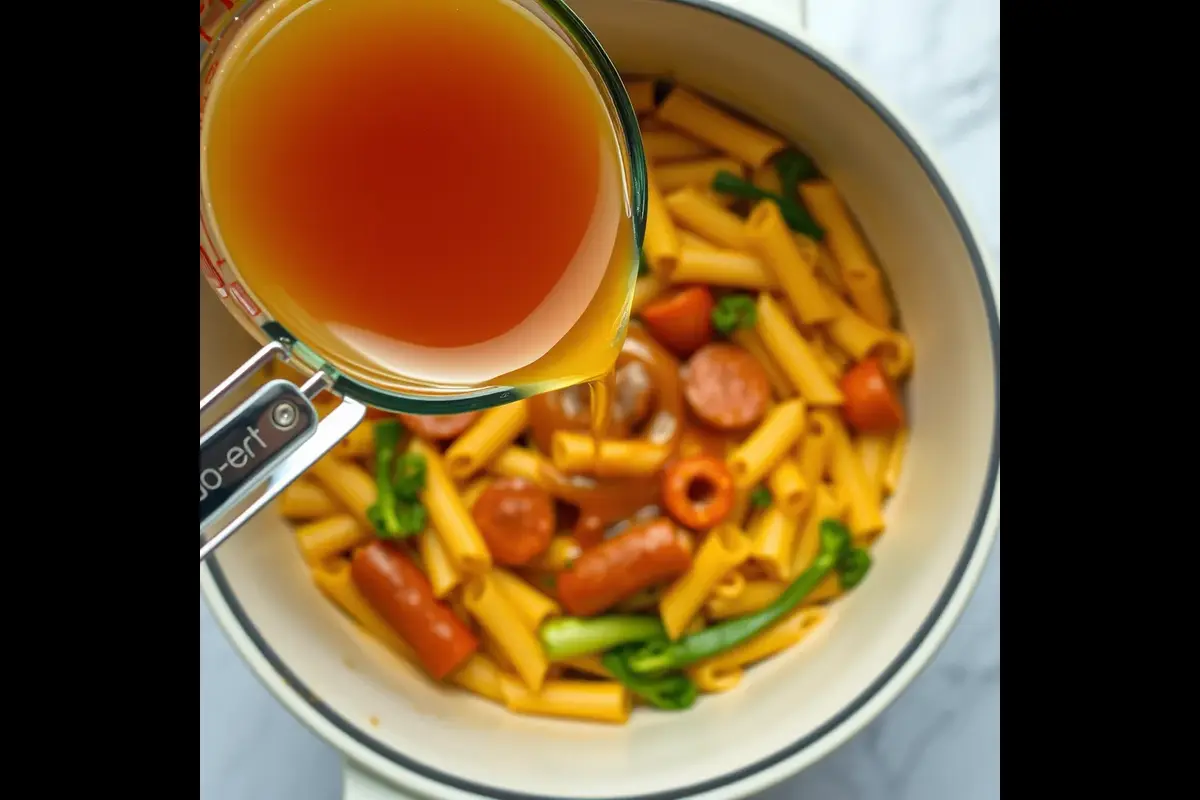When preparing pastalaya, nailing the water-to-noodle ratio is the secret to achieving that perfect texture and flavor. Too much water, and your dish becomes soupy. Too little, and the noodles end up undercooked or sticking to the pot. Understanding the right proportions can make or break this classic Cajun meal. In this guide, we’ll explore the ideal liquid-to-pasta ratio, factors that influence it, and how to master the art of cooking pastalaya.
Part 1: Basics of Cooking Pastalaya
What Makes Pastalaya Unique?
Pastalaya is a delicious Cajun dish that combines the bold flavors of jambalaya with the hearty texture of pasta. Unlike traditional jambalaya, which uses rice as its base, pastalaya swaps in pasta, making the cooking process slightly different. The pasta absorbs the broth and seasonings as it cooks, resulting in a rich, flavorful dish that brings together sausage, chicken, shrimp, and vegetables.
The Importance of Liquid Ratios in One-Pot Dishes
In one-pot recipes like pastalaya, the amount of liquid you use is crucial. The liquid not only cooks the pasta but also carries the seasonings and enhances the overall flavor. Using too much water can dilute the dish, while too little can leave your pasta unevenly cooked. The key is finding a balance that ensures the noodles are perfectly tender and the dish remains rich and flavorful.
Part 3: Determining the Ideal Water to Noodle Ratio

General Guidelines for Liquid-to-Pasta Proportions
Standard Ratios for Pastalaya
The generally accepted ratio for pastalaya is 4 to 4.5 cups of liquid per pound of pasta. This ensures the pasta has enough moisture to cook evenly while absorbing the rich flavors of the broth and spices. For firmer, al dente pasta, lean closer to 4 cups. If you prefer a softer texture, use up to 4.5 cups.
It’s also important to consider how much the pasta absorbs as it cooks. The liquid serves not only to hydrate the noodles but also to carry the seasonings throughout the dish. Keep a close eye on the pot to ensure the liquid doesn’t evaporate too quickly or leave the dish too dry.
Variations Based on Pasta Type
The type of pasta you choose can greatly impact the water-to-noodle ratio.
- Short Pasta: Penne, rigatoni, or rotini are ideal for pastalaya. These shapes have ridges and grooves that hold the sauce well, requiring the standard liquid ratio.
- Long Pasta: Fettuccine or linguine may require slightly more liquid due to their larger surface area. These pastas tend to absorb moisture more quickly and benefit from a slightly looser consistency.
Understanding your pasta’s characteristics allows you to make small adjustments that enhance the final dish.
Impact of Ingredients on Liquid Needs
Moisture Contribution from Ingredients
Proteins such as sausage, chicken, and shrimp contribute some moisture during cooking, but vegetables like bell peppers, onions, and celery (the Cajun “Holy Trinity”) release a significant amount of liquid. Tomatoes, particularly if using canned varieties, also add to the overall liquid balance. Consider reducing the broth slightly if using extra vegetables or tomatoes to avoid an overly watery consistency.
How Sauces and Cream Affect the Balance
If your recipe includes tomato paste or heavy cream, you may need to adjust the liquid-to-pasta ratio. These ingredients thicken the sauce, which could result in the need for additional broth to prevent the dish from becoming too dense. Adding liquid gradually as the pasta cooks allows for better control of the consistency.
Monitoring Liquid Levels During Cooking
Keeping an eye on the pot is essential for perfectly cooked pastalaya. Regularly stir the pasta to ensure even cooking and check the liquid level. If the dish starts to dry out before the pasta is done, add a small amount of broth, about 1/4 cup at a time. This prevents over-saturating the pasta while maintaining the dish’s bold flavors and creamy texture.
Part 4: Factors That Influence the Ratio
Cooking Method and Equipment
Using a Dutch Oven vs. Stockpot
The type of pot you use impacts how liquid evaporates and how evenly the pasta cooks.
- Dutch Oven: Known for its even heat distribution and ability to retain moisture, a Dutch oven is ideal for pastalaya. It minimizes evaporation, allowing you to stick closer to the standard liquid ratio.
- Stockpot: While effective, a stockpot may allow more liquid to evaporate due to its thinner walls and looser lid fit. If using a stockpot, consider adding an extra 1/2 cup of liquid to compensate for evaporation.
Covered vs. Uncovered Cooking
Covering the pot while cooking traps moisture, reducing evaporation and allowing the pasta to cook more quickly. In contrast, cooking uncovered lets steam escape, intensifying the flavors but requiring more frequent liquid adjustments. A hybrid approach—starting covered and finishing uncovered—can provide the best results, ensuring both flavor concentration and proper consistency.
Adjusting Ratios for High or Low Heat
Cooking over high heat speeds up evaporation, which might require additional liquid to maintain the dish’s balance. On the other hand, cooking over low heat allows for gradual moisture absorption, reducing the need for extra liquid. Adjust the heat based on your pasta type and the desired texture, keeping an eye on the liquid level to ensure the noodles don’t stick or burn.
Part 5: Step-by-Step Guide to Cooking Pastalaya
Prepping Ingredients for Optimal Liquid Balance
Measuring Broth or Stock
Accurate measurements of broth or stock are essential for achieving the right water-to-noodle ratio in pastalaya. Use a liquid measuring cup to ensure precision—this prevents the dish from becoming overly dry or soupy. For every pound of pasta, measure out 4 to 4.5 cups of broth, adjusting slightly based on your desired consistency. Opt for chicken or seafood broth for enhanced flavor, depending on the proteins used in your recipe. Always keep extra broth on hand to adjust during cooking, ensuring the dish doesn’t dry out as the pasta absorbs the liquid.
Incorporating Vegetables and Proteins
The addition of vegetables and proteins plays a significant role in the dish’s moisture balance. The Cajun “Holy Trinity” of onions, bell peppers, and celery releases natural liquids as they cook, slightly reducing the amount of broth needed. Similarly, proteins like shrimp, chicken, and sausage contribute moisture, particularly if cooked in the same pot. Sauté these ingredients before adding the liquid to release their juices and infuse the base with flavor. Keep track of the total liquid added to maintain control over the water-to-noodle ratio.
Cooking Pasta in One Pot
Cooking pasta directly in the pot with your other ingredients ensures even absorption of flavors and simplifies cleanup. To prevent sticking, stir frequently during the initial cooking stages and ensure the pasta is fully submerged in the broth. Start with medium heat to bring the mixture to a gentle simmer, allowing the noodles to cook evenly without rapid evaporation. Avoid boiling the liquid aggressively, as this can cause the pasta to cook unevenly or break apart.
As the noodles approach al dente, monitor the liquid level closely. If the broth has been fully absorbed before the pasta is tender, add small amounts of broth or water—1/4 cup at a time. Once the pasta reaches the desired texture, reduce the heat and let the dish rest for a few minutes to thicken naturally before serving.
Part 6: Tips and Tricks for Consistent Results

Expert Tips for Perfect Pastalaya Every Time
Avoiding Overcooking
Overcooking can turn a perfectly balanced pastalaya into a mushy mess. To prevent this, monitor the pasta’s doneness closely, beginning to check for tenderness a few minutes before the suggested cooking time. Stir gently to ensure the pasta doesn’t stick to the pot or clump together. Maintaining a steady simmer instead of a vigorous boil helps preserve the texture of the noodles and prevents them from absorbing too much liquid too quickly.
Enhancing Flavor Without Adding More Liquid
When adjusting for flavor, avoid adding extra liquid unnecessarily, as this can dilute the dish. Instead, use concentrated broths or bouillon cubes dissolved in a small amount of water to boost the richness without altering the consistency. Alternatively, add seasoning adjustments like smoked paprika, Creole seasoning, or a dash of cayenne to enhance the bold Cajun flavors. Finishing with fresh herbs or a squeeze of lemon can also brighten the dish without increasing the liquid content.
Part 7: Frequently Asked Questions (FAQs)
FAQs About Water to Noodle Ratio for Pastalaya
What’s the standard water-to-noodle ratio for pastalaya?
The typical ratio is 4 to 4.5 cups of liquid per pound of pasta. This amount provides the perfect balance for cooking the noodles evenly while allowing them to absorb the flavorful broth. If you prefer firmer pasta, stick closer to 4 cups. For a softer texture, use up to 4.5 cups. Always monitor the liquid level as the dish cooks to maintain consistency.
Can I adjust the ratio for different types of pasta?
Absolutely! Different pasta shapes absorb liquid differently. Short pasta like penne or rotini works well with the standard ratio, while long pasta such as fettuccine or linguine may need slightly more liquid due to their larger surface area. Adjust by adding 1/4 to 1/2 cup more broth for long pasta to ensure proper cooking and prevent sticking.
What should I do if my pastalaya becomes too dry?
If your pastalaya starts to dry out before the pasta is fully cooked, add small amounts of hot broth or water—about 1/4 cup at a time. Stir well to distribute the liquid evenly and allow it to absorb without over-saturating the dish. Keeping extra broth on hand ensures you can make quick adjustments as needed.
How do I ensure the noodles don’t overcook?
To prevent overcooking, begin checking the pasta for doneness a few minutes before the recommended cooking time. Keep the heat at a gentle simmer rather than a rolling boil. Stir occasionally to avoid sticking and remove the dish from heat as soon as the pasta reaches al dente. Let it rest briefly to allow the flavors to meld.
Part 8: Conclusion
Perfecting the Pastalaya Water-to-Noodle Ratio
Mastering the water-to-noodle ratio for pastalaya is the key to achieving a perfectly balanced dish. By sticking to the recommended ratios and making small adjustments based on pasta type and ingredients, you can create a meal that’s both flavorful and satisfying.
Remember, the joy of cooking pastalaya lies in its versatility. Feel free to experiment with different ratios, ingredients, and techniques to suit your personal taste. With practice and attention to detail, you’ll be serving up flawless pastalayathat everyone will love. Enjoy the journey of perfecting this Cajun classic!

